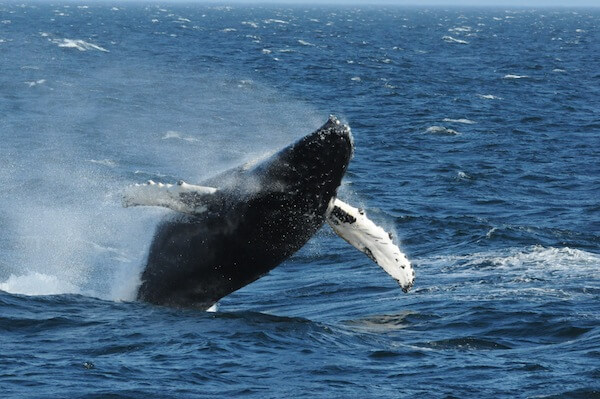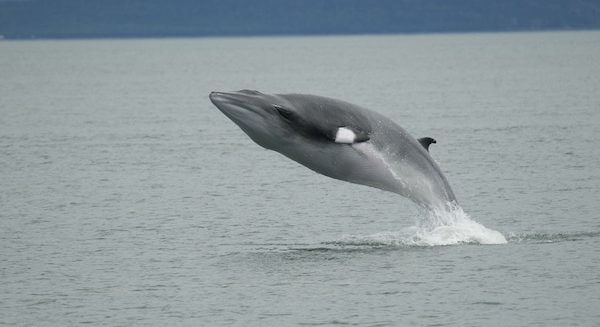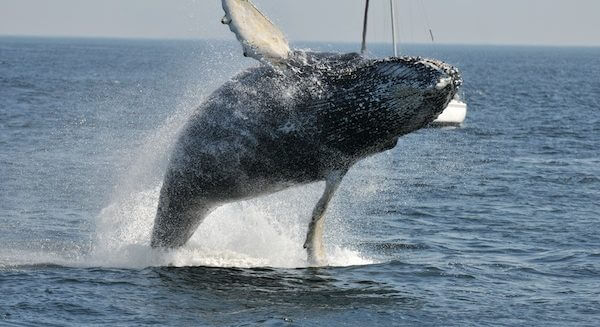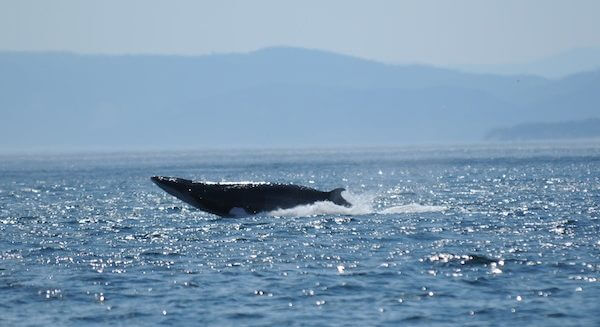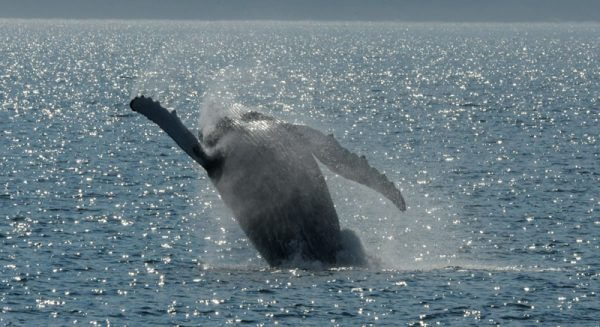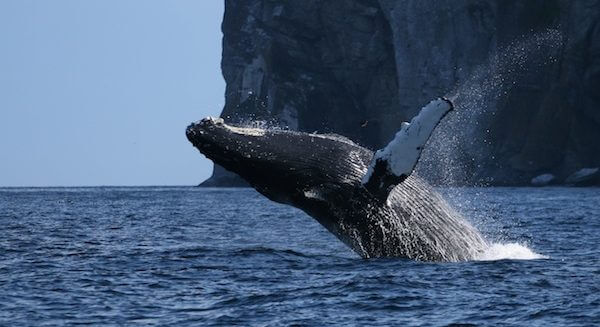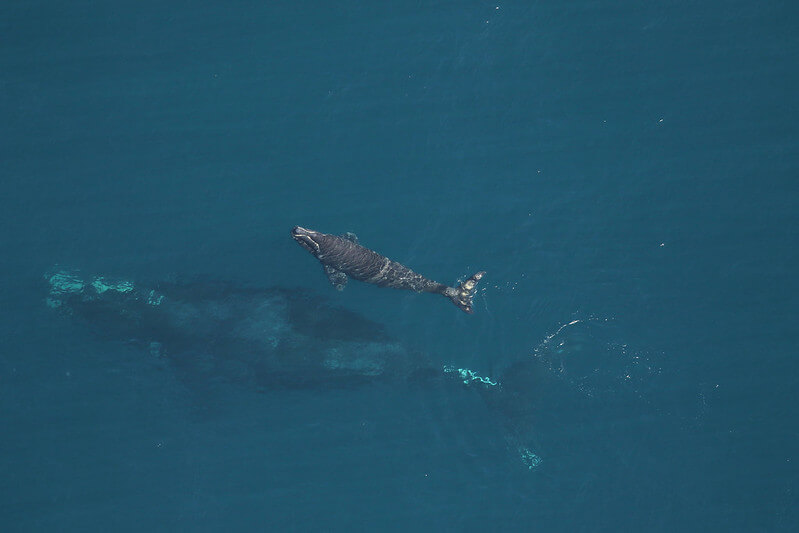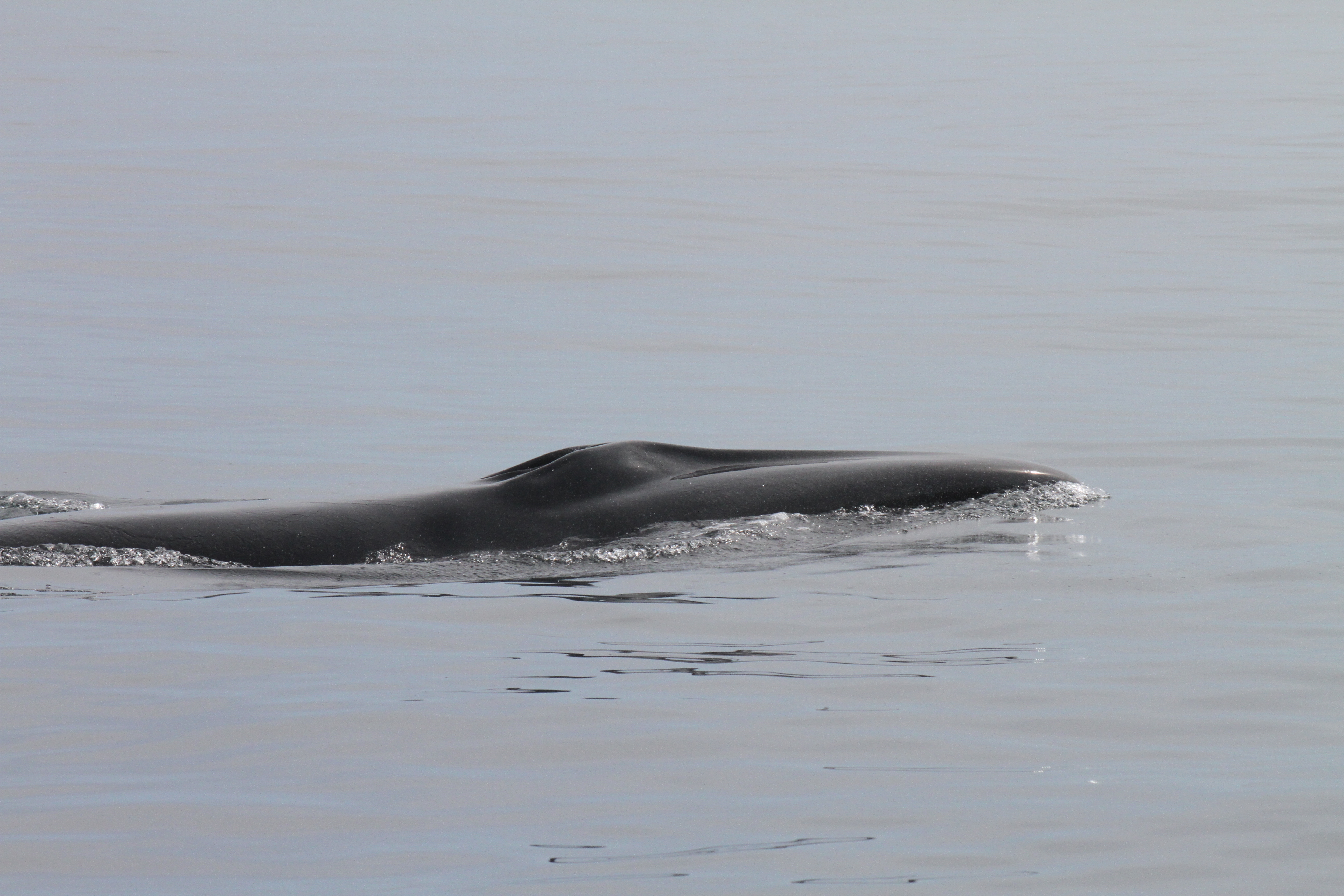Known as breaches in scientific jargon, these leaps out of the water that whales perform serve notably to communicate with distant companions, reveals an Australian study on humpbacks. Breaches seem to occur more frequently when the nearest group is more than four kilometres away and in unfavourable weather, when the wind and waves tend to mask the animals’ vocalizations. Repeated flipper slapping and lobtailing also appear to have a role in communication between members within a group, especially when they are separated or when a new individual joins the ranks.
Breaching is thought to have other functions as well: a form of play for younger animals, seduction and defiance for males during the mating season, a means of congregating before migration and acrobatics to rid the body of skin parasites. According to a study conducted by American researchers, these breaches might also help develop diving skills in young humpbacks. Indeed, the physical effort to pull off such a feat is believed to influence the production of myoglobin. Myoglobin carries and stores oxygen in the muscles of vertebrates. It is particularly abundant in marine mammals and is believed to be the key to their exceptional diving abilities.
Humpback whales are not the only species to exhibit this exuberant behaviour; minke , sperm and right whales are also known to breach. These demanding breaches likely require all the power the whale can muscle in order to overcome the water resistance and break the surface at top speed.
To learn more:
Wiley Online Library : Evidence for the functions of surface-active behaviors inhumpback whales (Megaptera novaeangliae)
Check out these impressive breaches that we caught on camera!
[metaslider id=22591]


